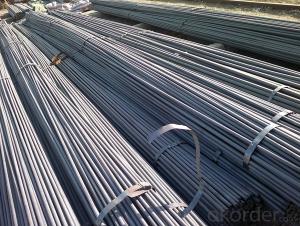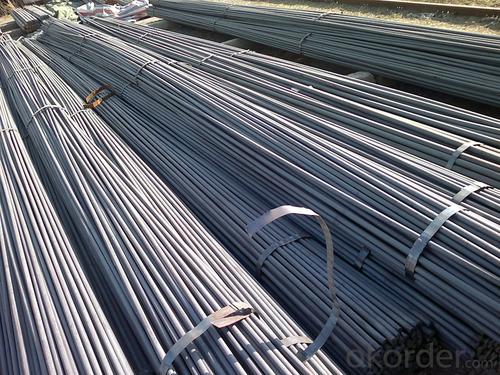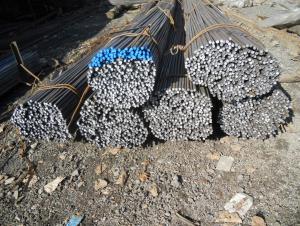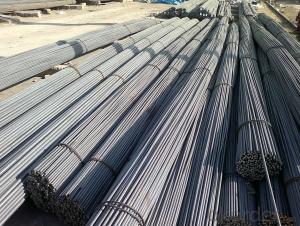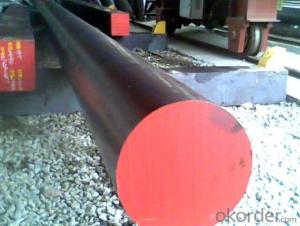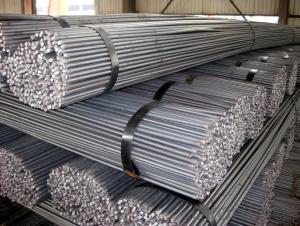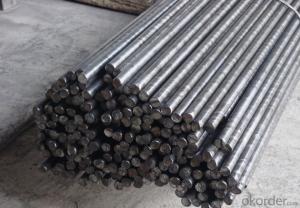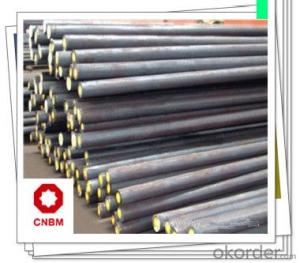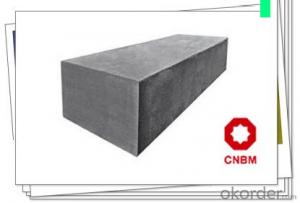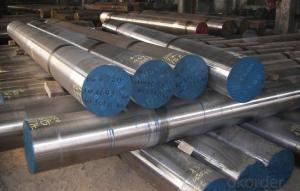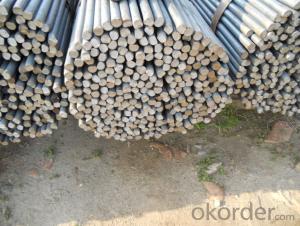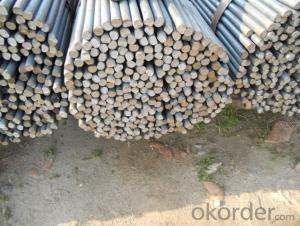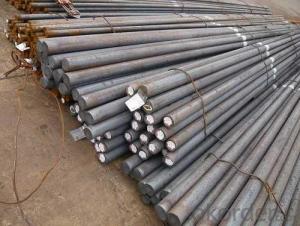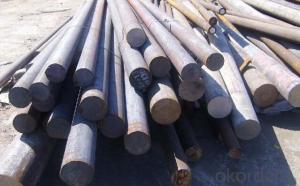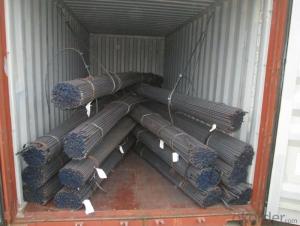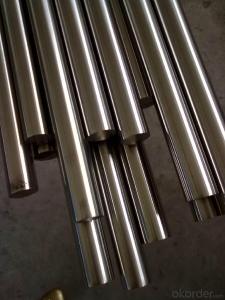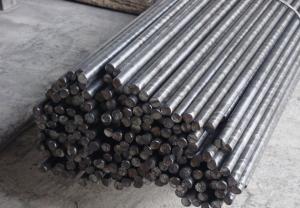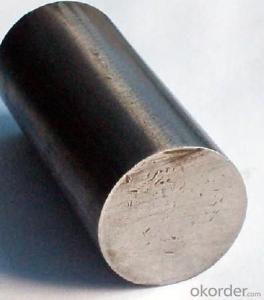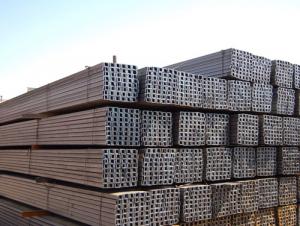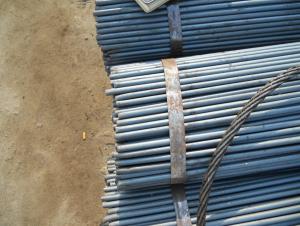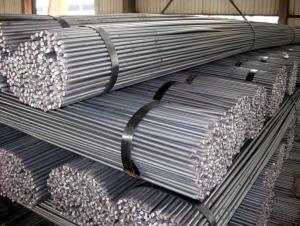Hot Rolled Steel Round Bar GB, ASTM, JIS Standard WIth High Quality
- Loading Port:
- China main port
- Payment Terms:
- TT or LC
- Min Order Qty:
- 25 m.t.
- Supply Capability:
- 200000 m.t./month
OKorder Service Pledge
OKorder Financial Service
You Might Also Like
Product Description:
OKorder is offering Hot Rolled Steel Round Bar GB, ASTM, JIS Standard WIth High Quality at great prices with worldwide shipping. Our supplier is a world-class manufacturer of steel, with our products utilized the world over. OKorder annually supplies products to European, North American and Asian markets. We provide quotations within 24 hours of receiving an inquiry and guarantee competitive prices.
Product Applications:
High Quality Hot Rolled Steel Round Bar GB, ASTM, JIS Standard WIth High Quality are ideal for structural applications and are widely used in the construction of buildings and bridges, and the manufacturing, petrochemical, and transportation industries.
Product Advantages:
OKorder's Hot Rolled Steel Round Bar GB, ASTM, JIS Standard WIth High Quality are durable, strong, and resist corrosion.
Main Product Features:
· Premium quality
· Prompt delivery & seaworthy packing (30 days after receiving deposit)
· Corrosion resistance
· Can be recycled and reused
· Mill test certification
· Professional Service
· Competitive pricing
Product Description:
1. Grade: Q195, Q235, A36, SS400, Q345
2. Material: Mild carbon steel
3. Diameter: 8mm-150mm
4. Length: 6m, 9m, 12m
5. Quenching methods: oil quenching, air cooling or salt bath quenching
6. Heat treatment: Isothermal annealing temperature is 800~880 °C, with 10~20 °C, the furnace cooling to about 600 °C
Usage and Applications of High Quality Hot Rolled Steel Round Bar GB, ASTM, JIS Standard
1. Construction steel round bar is mostly used for straight bundles supply, and used for steel, bolts and various mechanical parts. While the bigger round bar, or more than 25mm hot rolled bar, is mainly for the manufacture of mechanical parts or for seamless steel billet.
2. Steel round bar is used in construction and a large number of architectural and engineering structures.
3. Besides, we can supply some especial material steel round bar that can be used for main shaft of steamer, hummer shank, with big section and supper force.
Packaging & Delivery of High Quality Hot Rolled Steel Round Bar GB, ASTM, JIS Standard
Packaging Detail: All goods are packed in bundle with steel strips and shipped by break bulk vessel or container (depend on target market and different ports)
Delivery Detail: 45 days
Trade terms: FOB, CFR, CIF
MOQ: 25 tons per specification; we can negotiate the quantity if the specification is normal or we have stock of one specification.
Weight: The price invoicing on theoretical weight basis or actual weight basis depends on customer’s request.
Shipment: The shipment of bulk break or container is depends on customer’s request and the situation of the port of destination.
Documents given: Full set of original clean on board bill of lading; Original signed commercial invoice; Original packing list; Policy of insurance; Certificate of origin and what the target market needs.
FAQ:
Q1: Why buy Materials & Equipment from OKorder.com?
A1: All products offered byOKorder.com are carefully selected from China's most reliable manufacturing enterprises. Through its ISO certifications, OKorder.com adheres to the highest standards and a commitment to supply chain safety and customer satisfaction.
Q2: How do we guarantee the quality of our products?
A2: We have established an advanced quality management system which conducts strict quality tests at every step, from raw materials to the final product. At the same time, we provide extensive follow-up service assurances as required.
Q3: How soon can we receive the product after purchase?
A3: Within three days of placing an order, we will begin production. The specific shipping date is dependent upon international and government factors, but is typically 7 to 10 workdays.
Images:
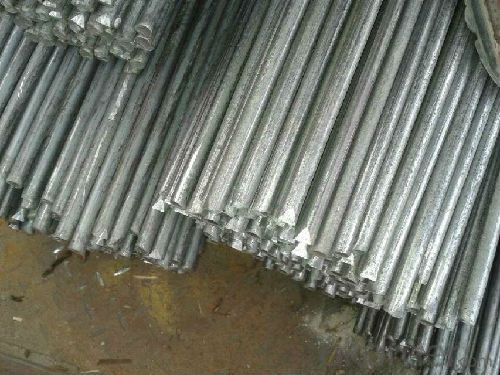
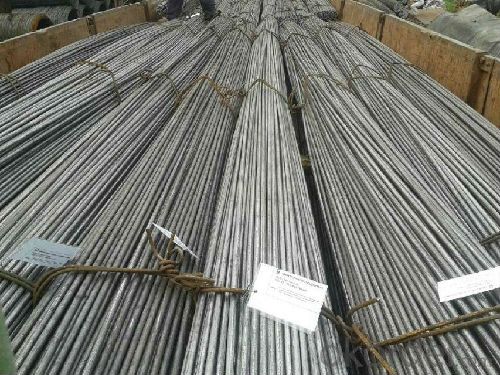
- Q: What is the difference between a polished and a hot rolled steel round bar?
- A polished steel round bar has undergone a process of polishing, which gives it a smooth and shiny surface finish. On the other hand, a hot rolled steel round bar is produced through a hot rolling process, resulting in a rougher and less refined surface texture.
- Q: Can steel round bars be used in the agricultural industry?
- Yes, steel round bars can be used in the agricultural industry. They are often used for constructing support structures such as fences, gates, and livestock pens. Steel round bars are also used in machinery and equipment manufacturing for applications like tractor attachments, irrigation systems, and grain storage bins. Their strength, durability, and versatility make them suitable for various agricultural purposes.
- Q: How do you identify the grade of a steel round bar?
- There are several ways to determine the grade of a steel round bar. First, examining the markings or labels on the bar itself can provide valuable information. Manufacturers often imprint or etch the grade directly onto the bar's surface. These markings usually include details like the grade designation (e.g., 304, 316, 4140), which represents the specific alloy composition, and may also include additional information such as the heat or lot number. Another method involves consulting the mill test certificate (MTC) that comes with the steel round bar. The MTC provides extensive information about the composition, mechanical properties, and other relevant specifications of the material. Typically, the steel mill or supplier issues the MTC, and it can be requested at the time of purchase. Additionally, the grade of a steel round bar can be determined through visual inspection and physical testing. Visual inspection entails examining the bar's appearance, texture, and color. Different grades of steel exhibit distinct characteristics, such as a glossy or matte finish, specific surface treatments, or variations in color due to varying alloying elements. Physical testing methods, such as tensile or hardness testing, can further confirm the steel grade. These tests measure the material's mechanical properties, including its strength, ductility, and hardness. By comparing the test results with established standards and specifications for different steel grades, it is possible to identify the grade of the round bar. In conclusion, to ascertain the grade of a steel round bar, one can inspect the markings, refer to the mill test certificate, visually assess the bar, and conduct physical tests to evaluate its mechanical properties.
- Q: What are the different heat treatment processes for steel round bars?
- There are several different heat treatment processes that can be used for steel round bars to enhance their mechanical properties and improve their overall performance. 1. Annealing: This process involves heating the steel round bars to a high temperature and then slowly cooling them, typically in a furnace. Annealing helps to relieve internal stresses, improve ductility, and refine the grain structure of the steel. 2. Normalizing: Normalizing is a heat treatment process that involves heating the steel round bars to a temperature above the critical range, followed by air cooling. This process helps to refine the grain structure, improve machinability, and enhance the mechanical properties of the steel. 3. Quenching and tempering: Quenching is a rapid cooling process that involves immersing the heated steel round bars into a quenching medium, such as oil or water, to rapidly cool them. This process results in the formation of a hard and brittle structure called martensite. To reduce the brittleness and improve the toughness of the steel, tempering is performed by reheating the quenched steel to a specific temperature and then cooling it. This process helps to improve the overall strength, hardness, and toughness of the steel. 4. Stress-relieving: Stress-relieving is a process that involves heating the steel round bars to a specific temperature below the critical range and holding it at that temperature for a certain period of time. This process helps to reduce residual stresses that may have developed during previous manufacturing processes, such as machining or welding. Stress-relieving improves the dimensional stability and reduces the risk of distortion or cracking in the steel round bars. 5. Induction hardening: Induction hardening is a specialized heat treatment process that involves selectively heating the surface of the steel round bars using high-frequency induction currents. This process quickly raises the temperature of the surface to a point where it can be hardened by quenching. Induction hardening is commonly used to increase the wear resistance and hardness of the surface while maintaining the toughness and ductility of the core of the steel round bars. These are some of the most common heat treatment processes used for steel round bars. The selection of the appropriate heat treatment process depends on the desired mechanical properties, intended application, and specific requirements of the steel round bars.
- Q: What are the different surface treatments available for steel round bars?
- Steel round bars can undergo a variety of surface treatments to enhance their properties and improve performance. Some common options include: 1. Hot-dip galvanizing: Immersing the bars in molten zinc forms a protective coating, offering excellent corrosion resistance suitable for outdoor or moist environments. 2. Electroplating: Applying a thin metal layer using an electric current can enhance corrosion resistance, appearance, or provide specific functional properties. 3. Powder coating: Heat-curing a dry powder paint creates a durable and decorative coating, offering corrosion resistance and a wide range of color options. 4. Black oxide coating: A chemical treatment creates a dark, matte finish, providing moderate corrosion resistance and enhancing appearance for decorative or non-reflective applications. 5. Chrome plating: Electroplating a thin chromium layer enhances corrosion and wear resistance, while also giving a shiny, reflective finish. 6. Nitriding: Heat treating the bars diffuses nitrogen into the surface, forming a hardened layer that improves hardness, wear resistance, and fatigue strength for high-strength and durable applications. 7. Anodizing: Although commonly used for aluminum, anodizing can also be applied to steel round bars. This electrolytic process creates a protective oxide layer, enhancing corrosion resistance and providing a durable and decorative finish. These examples represent only a fraction of the available surface treatments for steel round bars. The choice of treatment depends on the specific requirements of the application, such as corrosion resistance, wear resistance, appearance, or functional properties needed.
- Q: Can steel round bars be machined?
- Yes, steel round bars can be machined. Machining processes such as turning, milling, drilling, and grinding can be used to shape and cut steel round bars according to specific requirements.
- Q: What is the weight of a steel round bar?
- The weight of a steel round bar is determined by its dimensions, specifically its diameter and length. You can determine the weight using the formula: weight = volume × density. To determine the volume of the steel round bar, you can use the formula for the volume of a cylinder: volume = π × (diameter/2)^2 × length. Here, π represents a mathematical constant approximately equal to 3.14159. The density of steel varies depending on the type and grade, but it typically falls around 7.85 grams per cubic centimeter (g/cm³) or 7850 kilograms per cubic meter (kg/m³). By substituting the appropriate values into the formula, you can calculate the weight of the steel round bar in the desired unit, such as grams, kilograms, pounds, and so on.
- Q: Can steel round bars be used for making gears or sprockets?
- Gears or sprockets can indeed be made using steel round bars. Steel is widely employed in the manufacturing of gears and sprockets due to its exceptional strength, durability, and resistance to wear and tear. Steel round bars can be shaped through machining or forging and then further modified by cutting, drilling, or milling to create the necessary teeth or grooves for gear or sprocket functionality. The selection of the specific type of steel and its heat treatment can be based on the application requirements, such as load capacity, speed, and environmental conditions. All in all, steel round bars offer a versatile and dependable option for the production of gears and sprockets.
- Q: How are steel round bars used in the manufacturing of agricultural implements?
- Steel round bars are commonly used in the manufacturing of agricultural implements due to their strength and durability. These bars are used as a primary material for constructing various components of agricultural tools such as plows, cultivators, tillers, and harrows. The high tensile strength of steel round bars allows these implements to withstand the rigorous demands of agricultural operations, ensuring long-lasting performance and efficient use in the field.
- Q: What is the maximum temperature a steel round bar can withstand?
- The maximum temperature a steel round bar can withstand depends on several factors such as the specific type of steel, its composition, and the intended application. Generally, most common grades of steel have a maximum temperature limit of around 1,200 to 1,400 degrees Fahrenheit (650 to 760 degrees Celsius). However, some stainless steels can withstand higher temperatures, reaching up to 2,200 degrees Fahrenheit (1,200 degrees Celsius). Additionally, specialized heat-resistant alloys such as Inconel or Hastelloy can withstand even higher temperatures, up to 2,500 degrees Fahrenheit (1,370 degrees Celsius) or more. It is crucial to consult the manufacturer's specifications or conduct thorough research to determine the precise maximum temperature limit for a specific steel round bar in order to ensure its safe and efficient use.
Send your message to us
Hot Rolled Steel Round Bar GB, ASTM, JIS Standard WIth High Quality
- Loading Port:
- China main port
- Payment Terms:
- TT or LC
- Min Order Qty:
- 25 m.t.
- Supply Capability:
- 200000 m.t./month
OKorder Service Pledge
OKorder Financial Service
Similar products
Hot products
Hot Searches
Related keywords
